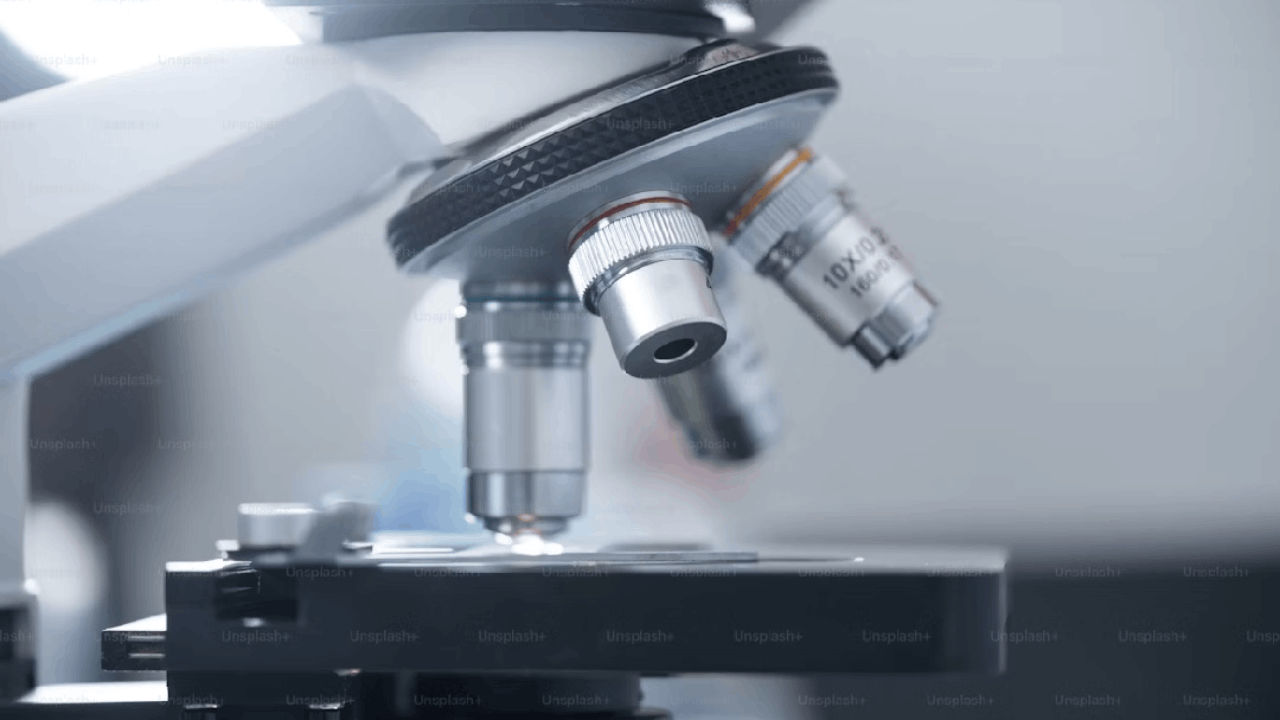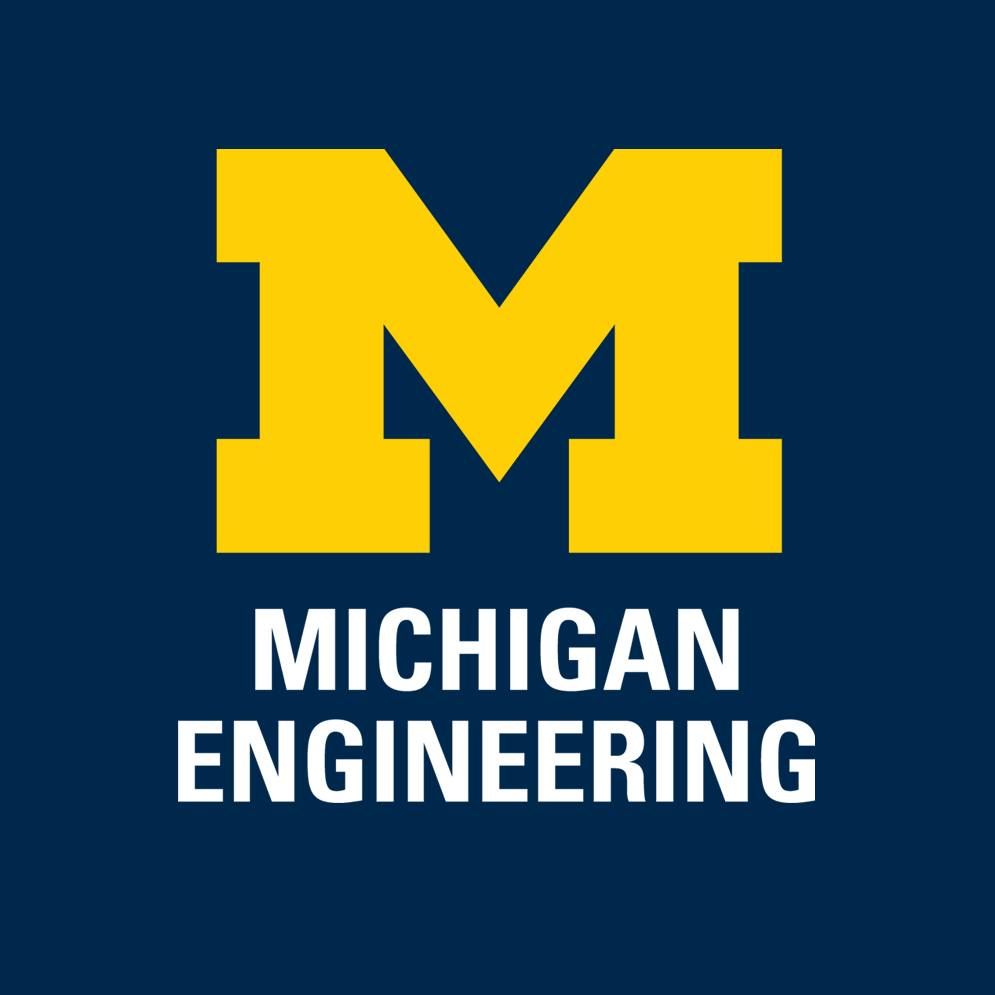预约演示
更新于:2025-11-03
Iopofosine I-131
更新于:2025-11-03
概要
基本信息
非在研机构 |
最高研发阶段临床3期 |
首次获批日期- |
最高研发阶段(中国)- |
特殊审评突破性疗法 (美国)、快速通道 (美国)、孤儿药 (美国)、罕见儿科疾病 (美国)、孤儿药 (欧盟)、优先药物(PRIME) (欧盟) |
登录后查看时间轴
结构/序列
分子式C29H53INO4P |
InChIKeyZOAIEFWMQLYMTF-YRKXUXMHSA-N |
CAS号873438-88-1 |
使用我们的ADC技术数据为新药研发加速。
登录
或

关联
8
项与 Iopofosine I-131 相关的临床试验NCT05610891
A Phase 1b, Open-Label, Study of a Novel Targeted Radiotherapy in Children, Adolescents and Young Adults With Inoperable Relapsed or Refractory High-Grade Glioma
The purpose of this dose finding study is to evaluate the safety and efficacy of 2 different dose levels of CLR 131 in children, adolescents and young adults with relapsed or refractory high-grade glioma (HGG).
开始日期2023-10-01 |
申办/合作机构 |
NCT04105543
Therapeutic Combination of CLR 131 With External Beam Radiation in Head and Neck Cancer
This is a Phase 1 study of the use of an investigational drug that selectively delivers radiation to malignant tumor cells, CLR 131, in combination with external beam radiation therapy (EBRT) in subjects with locoregionally recurrent head and neck cancer. The trial will enroll up to 12 participants who are amenable to retreatment with radiation therapy. Participants who also have distant metastatic disease may be enrolled on this clinical trial, but they must have evaluable disease that will be clinically treated with radiation therapy, as per standard of care. All participants will receive a dosimetry test dose of CLR 131 to establish drug uptake by the tumor and enable Monte Carlo dose estimation based on CLR 131 SPECT/CT imaging evaluation. Participants showing uptake will receive a cumulative tumor dose of 60-70 Gy using personalized dose calculation (via Monte Carlo methods) of CLR 131 combined with external beam radiation.
开始日期2019-12-20 |
申办/合作机构 |
NCT03478462
An Open-Label, Dose Escalation, Efficacy, and Safety Study of CLR 131 in Children, Adolescents, and Young Adults With Select Solid Tumors, Lymphoma, and Malignant Brain Tumors
The study evaluates CLR 131 in children, adolescents, and young adults with relapsed or refractory malignant solid tumors and lymphoma and recurrent or refractory malignant brain tumors for which there are no standard treatment options with curative potential.
开始日期2019-04-30 |
申办/合作机构 |
100 项与 Iopofosine I-131 相关的临床结果
登录后查看更多信息
100 项与 Iopofosine I-131 相关的转化医学
登录后查看更多信息
100 项与 Iopofosine I-131 相关的专利(医药)
登录后查看更多信息
43
项与 Iopofosine I-131 相关的文献(医药)2025-06-01·PEDIATRIC PULMONOLOGY
Impact of Home Oxygen Therapy for Bronchopulmonary Dysplasia on Families With Neonates: A Survey Conducted in Japan
Article
作者: Namba, Fumihiko ; Ogawa, Ryo ; Hasebe, Masaki ; Nakamura, Tomohiko ; Arimitsu, Takeshi
ABSTRACT:
Introduction:
Bronchopulmonary dysplasia (BPD) often necessitates home oxygen therapy (HOT) in children. Although HOT facilitates early hospital discharge and provides security, its impact on families remains unclear. This study examined family experiences with HOT to identify challenges and strategies for enhanced implementation.
Methods:
A web‐based survey was conducted with 113 families of children with BPD who used HOT within the past 3 years. Questions included the preparation for HOT, postdischarge challenges, and home monitoring devices.
Results:
HOT enabled early discharge; however, 42% families felt anxious upon leaving the hospital. Postdischarge life was harder than expected for 72% families, with mobility (82%) and equipment handling (82%) being major concerns. Coordination with home nursing services (55%) was helpful, whereas trial home stays (17%) and home visits (17%) were less commonly cited as beneficial. Home monitoring devices, used by 92% families, led to false alarms (75%). Despite such challenges, 99% considered it vital. A total of 26% adjusted oxygen flow independently, raising safety concerns.
Discussion:
The findings highlight the need for improved predischarge education, enhanced outpatient support, and technological advancements. Comprehensive preparation programs, improved home monitoring accuracy, and increased social awareness are essential to optimize HOT management and improve family quality of life.
2025-01-01·EBioMedicine
Safety and toxicity of Iopofosine I 131 (CLR 131) with external beam radiation therapy in recurrent or metastatic head and neck cancer: results of a phase 1 single-centre, open-label, single-arm, dose escalation and dose expansion study
Article
作者: Cho, Steve Y ; Oliver, Kate ; Harari, Paul M ; Trask, Diana ; Glazer, Tiffany A ; Kimple, Randall J ; Adam, David P ; Bednarz, Bryan ; Burr, Adam ; Yu, Menggang ; Longcor, Jarrod ; Rogus-Pulia, Nicole ; Bruce, Justine Yang ; McCulloch, Timothy M ; Hill, Patrick ; Piaskowski, Shari M ; Hartig, Gregory K ; Wieland, Aaron M
BACKGROUND:
Re-irradiation of recurrent head and neck cancer (HNC) is often limited by tumour adherence to critical structures and/or radiation tolerance of critical normal tissues. Iopofosine I 131 (CLR 131) is a targeted small molecular phospholipid ether (PLE) drug conjugate that delivers iodine-131 selectively to tumour cells. We conducted a phase 1, single-centre, open-label study to determine whether CLR 131 given with reduced dose of external beam radiation therapy (EBRT) would be tolerable and feasible.
METHODS:
All participants received previous curative intent treatment with radiotherapy as primary or adjuvant treatment. Eligible participants demonstrated uptake of CLR 131 as indicated via single photon emission CT/CT (SPECT/CT) imaging following CLR 131 test dose. Participants received two therapeutic doses of CLR 131 (days 1 and 8) with SPECT/CT imaging performed to quantitate the biodistribution of CLR 131. Participants subsequently received EBRT to achieve the designated radiation dose (60-70 Gy). The primary endpoint was safety. This trial was registered with ClinicalTrials.gov, NCT04105543, and enrolment and follow-up are complete.
FINDINGS:
Twelve participants completed treatment with CLR 131 and EBRT. Eight participants experienced grade 4 non-DLT haematologic toxicities (2 anaemia, 8 leukopenia, 5 thrombocytopenia) at least probably attributed to CLR 131, consistent with the expected toxicity profile. Haematologic toxicities occurred during weeks 6-8 from the first dose of CLR 131 and resolved within three weeks without sequelae. There were no treatment-related grade 3-4 non-haematologic toxicities.
INTERPRETATION:
CLR 131 in combination with EBRT did not confer any safety concerns, and was tolerable in participants with recurrent/metastatic HNC. Myelosuppression was consistent with the known toxicity profile of CLR 131.
FUNDING:
National Institutes of HealthP50 DE026787, National Cancer InstituteP30 CA014520, National Institutes of Health1UL1TR002373, Cellectar, NCT04105543.
2023-09-01·Cancer biotherapy & radiopharmaceuticals
Targeting of Head and Neck Cancer by Radioiodinated CLR1404 in Murine Xenograft Tumor Models with Partial Volume Corrected Theranostic Dosimetry
Article
作者: Adam, David P. ; Grudzinski, Joseph ; Li, Chunrong ; Jeffery, Justin ; Marsh, Ian R. ; Longhurst, Colin ; Hernandez, Reinier ; Bednarz, Bryan P. ; Harari, Paul M. ; Weichert, Jamey P.
Background: Delivery of radiotherapeutic dose to recurrent head and neck cancer (HNC) is primarily limited by locoregional toxicity in conventional radiotherapy. As such, HNC patients stand to benefit from the conformal targeting of primary and remnant disease achievable with radiopharmaceutical therapies. In this study, the authors investigated the tumor targeting capacity of 131I-CLR1404 (iopofosine I-131) in various HNC xenograft mouse models and the impact of partial volume correction (PVC) on theranostic dosimetry based on 124I-CLR1404 (CLR 124) positron emission tomography (PET)/computed tomography (CT) imaging. Methods: Mice bearing flank tumor xenograft models of HNC (six murine cell line and six human patient derived) were intravenously administered 6.5-9.1 MBq of CLR 124 and imaged five times over the course of 6 d using microPET/CT. In vivo tumor uptake of CLR 124 was assessed and PVC for 124I was applied using a novel preclinical phantom. Using subject-specific theranostic dosimetry estimations for iopofosine I-131 based on CLR 124 imaging, a discrete radiation dose escalation study (2, 4, 6, and 8 Gy) was performed to evaluate tumor growth response to iopofosine I-131 relative to a single fraction of external beam radiation therapy (6 Gy). Results: PET imaging demonstrated consistent tumor selective uptake and retention of CLR 124 across all HNC xenograft models. Peak uptake of 4.4% ± 0.8% and 4.2% ± 0.4% was observed in squamous cell carcinoma-22B and UW-13, respectively. PVC application increased uptake measures by 47%-188% and reduced absolute differences between in vivo and ex vivo uptake measurements from 3.3% to 1.0 percent injected activity per gram. Tumor dosimetry averaged over all HNC models was 0.85 ± 0.27 Gy/MBq (1.58 ± 0.46 Gy/MBq with PVC). Therapeutic iopofosine I-131 studies demonstrated a variable, but linear relationship between iopofosine I-131 radiation dose and tumor growth delay (p < 0.05). Conclusions: Iopofosine I-131 demonstrated tumoricidal capacity in preclinical HNC tumor models and the theranostic pairing with CLR 124 presents a promising new treatment approach for personalizing administration of iopofosine I-131.
46
项与 Iopofosine I-131 相关的新闻(医药)2025-10-29
Oct. 27, 2025 -- Cellectar Biosciences, Inc. (NASDAQ: CLRB), a late-stage clinical biopharmaceutical company focused on the discovery and development of drugs for the treatment of cancer, today announced the U.S. Food and Drug Administration (FDA) has granted rare pediatric drug designation (RPDD) for iopofosine I 131 in inoperable relapsed or refractory pediatric high-grade glioma (r/r pHGG).
Iopofosine I 131 is a potential first-in-class, novel cancer targeting agent utilizing a phospholipid ether as a radioconjugate monotherapy. The FDA previously granted Orphan Drug Designation for iopofosine I 131 for the treatment of pHGG.
“Receiving Rare Pediatric Disease Designation for iopofosine I 131 underscores its potential to address one of the most devastating cancers affecting children and young adults. Combined with the encouraging interim results from our CLOVER-2 pHGG study, which showed meaningful improvements in progression-free and overall survival, this designation further validates the promise of our targeted radiotherapeutic approach,” stated James Caruso, president and CEO of Cellectar. “We believe iopofosine I 131 represents a compelling opportunity for strategic collaboration to accelerate development and bring a potentially first-in-class therapy to patients who urgently need new options.”
The FDA’s Rare Pediatric Disease Designation program is intended to encourage the development of new therapies for serious and life-threatening diseases that primarily affect individuals under 18 years of age. If a New Drug Application (NDA) for iopofosine I 131 is approved, upon reauthorization of the program Cellectar may be eligible to receive a Priority Review Voucher (PRV), which can significantly expedite the review process for future New Drug Applications or Biologic License Applications, may be redeemed to receive priority review for another marketing application or may be sold or transferred.
Pediatric high-grade gliomas are a collection of aggressive tumors affecting the brain and central nervous system. As reported in the literature, median progression free survival (PFS) and overall survival (OS) for patients with relapsed pHGG is poor; approximately 2.25 months and 5.6 months, respectively.
Interim data from CLOVER-2, the company’s ongoing Phase 1b trial of iopofosine I 131 in children, adolescents and young adults with r/r pHGG at multiple sites in the United States and Canada, were highlighted in an oral presentation at the recent American Association for Cancer Research (AACR) Special Conference on Pediatric Cancer that took place in late September 2025.
The company’s chief operating officer, Jarrod Longcor, delivered the update, “Precision Radiotherapy for Incurable Brain Tumors: Phase 1b Dose & Regimen Optimization Study of Iopofosine I 131 in Inoperable Relapsed or Refractory Pediatric High-Grade Glioma, Interim Data Assessment,” which showed that all patients receiving a minimum of 55 mCi total administered dose (n=6) experienced an average of 5.4 months of PFS and 8.6 months of OS, ongoing. All patients experienced disease control, which according to the committee for the Response Assessment in Pediatric Neuro-Oncology (RAPNO) does correlate with survival benefit. Three patients who received additional dosing cycles (a minimum of four total infusions) had an average PFS of 8.1 months and an OS of 11.5 months (ranging from 4.9 to 14.9 months), ongoing, with two achieving an objective response (ORR).
Two case studies were highlighted in the oral presentation. Case Study 1 showed a 25-year-old male with diffuse hemispheric glioma with the H3 G34R/V mutation who had three prior therapies and who received a total administered dose of 126.6mCi of iopofosine I 131 over four doses (40mCi/m2/dose) had his target lesion reduced by more than 50% approximately eight months post screening. This patient had PFS of 10.9 months and survival is ongoing at greater than 18 months as of July 25, 2025.
Case Study 2 showed a 15-year-old female with ependymoma who had eight prior therapies and who received a total administered dose of 58.9mCi of iopofosine I 131 over four doses (20mCi/m2/dose) had her target lesion reduced from 252mm2 to approximately 141mm2. This patient had PFS of 11.2 months and her ongoing survival was greater than 17 months as of July 22, 2025.
Iopofosine I 131 was well tolerated and its toxicity profile was consistent with the company's previously reported safety data. Importantly, patients on iopofosine I 131 did not experience any cardiovascular, renal, or liver toxicities, and no peripheral neuropathy or significant bleeding. The safety profile was consistent with selective targeting of tumor sites with clinically negligible off-target effect outside the hematologic system. The most frequently reported treatment emergent adverse events were hematologic in nature (thrombocytopenia, neutropenia and anemia) and were predictable and manageable. No treatment-related deaths were reported.
Pediatric high-grade gliomas are a collection of aggressive tumors affecting the brain and central nervous system. The patients enrolled in CLOVER-2 with pHGG (n=14) were diagnosed with diffuse midline gliomas (DMG), ependymomas, diffuse intrinsic pontine gliomas (DIPG), diffuse hemispheric gliomas (DHG) and anaplastic ependymomas. As reported in the literature, median progression free survival (PFS) and overall survival (OS) for patients with relapsed pHGG is poor; approximately 2.25 months and 5.6 months, respectively. While MRI measures of tumor volume change can be helpful and are used as a surrogate in clinical trials, they often fail to predict survival.
The Phase 1b trial of iopofosine I 131 consists of children, adolescents and young adults with r/r pHGG at multiple sites in the United States and Canada. The study is designed to evaluate the safety and tolerability of iopofosine I 131 in two dosing cohorts, one cohort receiving two doses at 20mCi/m2 each separated by 14 days for two cycles with a third optional cycle. Patients in the second cohort will receive 10 mCi/m2 each, separated by 14 days for three cycles with a fourth optional cycle. The study will also determine therapeutic activity defined as progression free survival (PFS) and overall survival, antitumor activity defined as the reduction in tumor volume and identify the recommended Phase 2/3 dose of iopofosine I 131 in children, adolescents and young adults with r/r pHGG.
Cellectar Biosciences is a late-stage clinical radiopharmaceutical company focused on the discovery and development of proprietary drugs for the treatment of cancer. The company’s core objective is to leverage its proprietary Phospholipid Drug Conjugate™ (PDC) delivery platform to develop the next-generation of cancer cell-targeting treatments that deliver improved efficacy and better safety.
The company’s product pipeline includes its lead assets: iopofosine I 131, a PDC designed to provide targeted delivery of iodine-131 (radioisotope) for the treatment of hematologic and solid tumor cancers such as Waldenstrom’s macroglobulinemia (WM) and pediatric high grade gliomas; CLR 121125, an iodine-125 Auger-emitting program targeting solid tumors, such as triple negative breast, lung and colorectal cancers; CLR 121225, an actinium-225 based program targeting solid tumors with significant unmet need, such as pancreatic cancer; and proprietary preclinical PDC chemotherapeutic programs and multiple partnered PDC assets.
Iopofosine I 131 has been studied in Phase 2b trials for relapsed or refractory WM and multiple myeloma (MM), non-Hodgkin’s lymphomas and central nervous system (CNS) lymphoma, and the CLOVER-2 Phase 1b study, targeting pediatric patients with high-grade gliomas, for which Cellectar is eligible to receive a Pediatric Review Voucher from the FDA upon approval. The FDA has granted iopofosine I 131 Breakthrough Designation, six Orphan Drug, four Rare Pediatric Drug and two Fast Track Designations for various cancer indications. The European Medicines Agency (EMA) has also granted PRIME and orphan drug designations for the treatment of WM.
The content above comes from the network. if any infringement, please contact us to modify.

临床结果孤儿药优先审批
2025-10-25
·氨基观察
氨基观察-创新药组原创出品
作者 | 沙晓威
在医药圈,每年的ESMO大会就像一场“行业考试”,热门赛道的每一点动静都能引发关注。
2025年这场大会上,核药赛道依旧热度不减。既有诺华Pluvicto这样的明星药拓展新适应症,也有赛诺菲以α核素为基础的药物AlphaMedix刷新现有核药治疗记录。
值得注意的是,中国企业带着首个国产核药PRRT药物站上国际舞台——先通制药的XTR008在神经内分泌瘤治疗上效果优异,且更符合中国患者的特征。
此次ESMO大会的展示,也是核药崛起的一个缩影。从核素的选择、到递送方式,再到适应症的优化,核药的新一轮较量已经开始。
/ 01 /
Pluvicto:往更前线推进,忧喜参半
提到核药,绕不开诺华的Pluvicto。作为第一款获批上市的核药,将这一“小众赛道”拉到了聚光灯下。
2024年狂揽14亿美元销售额,成为首个迈入重磅炸弹行列的放射性药物。但诺华显然不满足于此,PSMAfore试验的结果,帮助Pluvicto拓展了市场空间。2025年3月,FDA批准Pluvicto用于PSMA阳性的mCRPC患者化疗前的早期治疗,该审批将符合条件的患者数量增加了3倍。
不过,Pluvicto的进击之路并未结束,今年ESMO上,它带着PSMAddition 3期试验数据,向激素敏感性前列腺癌(HSPC)这个更前线的适应症发起冲击。
市场逻辑明确:Pluvicto目前获批的是mCRPC,人数较少。而HSPC患者处于疾病更早期阶段,患者人群庞大。诺华肿瘤学全球负责人Dushen Chetty更是直言,一旦该适应症获批,Pluvicto的合格患者群将直接翻倍,并大胆预测Pluvicto销售峰值将超过50亿美元。
但现实却稍显冷静,这次ESMO大会上公布的PSMAddition数据可以说是“喜忧参半”。
好消息是,Pluvicto联合SoC在放射学无进展生存期(rPFS)方面具有临床意义的改善,且与单独SoC相比,可将进展及死亡风险降低28%。延缓了HSPC进展为mCRPC的时间。
坏消息是,关键的OS数据还没成熟,且HR是0.84。虽然Pluvicto组表现出积极趋势,但没有达到统计学意义上的显著差异。
墨尔本Peter MacCallum癌症中心的肿瘤学家Arun Azad更是直接泼了冷水:“虽然PSMAddition中观察到的放射学无进展生存期益处可能会获得监管部门的批准,但即使进行更长时间的随访,也不可能看到OS益处。”
这样的担忧不是空穴来风。
一方面是PSMAAddition出现了交叉病例的情况,即对照组中16%的患者后期转用了Pluvicto,这对OS的判断具有干扰性。
另一方面,现阶段ADT联合ARPI的治疗手段虽疗效不及Pluvicto,但好在安全性更优。作为前列腺癌早期阶段,HSPC患者身体状态相对好,但Pluvicto的口干和胃肠道毒性,以及潜在恶性肿瘤的风险问题是否真的改善了患者生存质量仍需打个问号。
尽管受到质疑,诺华仍是计划年底前根据最终的rPFS数据及更新后的OS结果,像FDA提交申请。此外,诺华还在积极筹备Pluvicto在寡转移前列腺癌患者的疗效(PSMA-DC),该适应症也是对疾病早期阶段的探索。
在核药领域,诺华绝对是长期的领跑者:核心产品治疗前列腺癌的Pluvicto以及用于治疗GEP-NETs的Lutathera共同创造年净销售额超20亿的数据。除两款上市药物外,还有包括177Lu-NeoB、225Ac-PSMA-617在内的多款在研核药。2024年,公司还以17.5亿美元收购核药公司Mariana Oncology,继续加码。
/ 02 /
新势力崛起
2025年ESMO,诺华的背后,是一众玩家在核药赛道的集体冒头。
其中68Ga-OncoACP3-DOTA(诊断)和177Lu-OncoACP3-DOTA(治疗)的组合备受关注。2025年6月,Philochem AG以潜在总金额13.5亿美元的价格将药物授予BMS子公司RayzeBio。
在治疗前列腺癌已有Pluvicto的背景下,这两款药物的优势在于靶向的酸性磷酸酶3(ACP3)相较于PSMA靶点更具肿瘤异质性,这一特性有效解决了PSMA低表达或不表达的治疗失效问题。此次大会公布的早期结果也符合预期,诊断性能优于PSMA,且治疗安全性更佳。
ITM公司的177Lu-edotreotide(ITM-11)则对标的是诺华的另一款药Lutathera,在治疗胃肠胰神经内分泌肿瘤(GEP-NETs)的3期COMPETE试验中同样表现出色,ORR达到21.9%,且全亚组实现mPFS延长。
同样是针对GEP-NETs,赛诺菲的核药AlphaMedix(212Pb-DOTAMTATE)在缓解率上更是刷新了认知。
此次EMSO大会上AlphaMedix针对GEP-NETs的Alphamedix-02试验结果进行了两次演示。首先是针对未经过放射治疗的患者,ORR为57%,效果上显著优于Lutathera。而针对既往接受过Lutathera治疗的患者,AlphaMedix的ORR达到19%,虽无差异化优势,但是具有临床意义。
AlphaMedix也代表新核药的迭代。作为一种基于α粒子的靶向疗法,AlphaMedix由用铅-212标记的生长抑素受体靶向肽复合物组成,可在患者体内产生α粒子攻击肿瘤。
差异就在于此:α核素相较于Lutathera使用的β核素能量更高,能造成更频繁的双链DNA断裂,对肿瘤细胞杀伤更彻底,而且半衰期和电离半径短,对患者的毒副作用更小。
目前FDA已授予AlphaMedix突破性疗法认定,用以治疗未接受过肽受体放射性疗法的GEP-NETs肿瘤患者。
形成对比的是,同样基于铅-212的Perspective Therapeutics核药212Pb-VMT-α-NET的表现并不乐观。在未接受过核药治疗的NET患者的1/2期临床试验中,23例可评估患者的ORR为35%,在16名表达SSTR2患者(不同肿瘤)的亚组中,ORR为44%。但市场显然对这种“凑数”行为不满意,Perspective Therapeutics股价随之下跌。
无论结局如何,此次ESMO已经展示了当前核药的研发热潮,而以新靶点、新核素、新适应症组成的新势力正在崛起。
尽管还有许多药企并未在ESMO大会上展示,但是极具设计的思路也值得关注:
比如,Cellectar Biosciences的磷脂药物偶联递送平台,能让核素穿过细胞膜精准送到肿瘤细胞。目前其管线Iopofosine I 131已经进入3期临床,针对的是多种实体瘤。
Oncoinvent则把目光放在了“冷门癌种”上。它用α核素镭-224开发的Radspherin,专门针对卵巢癌、结直肠癌的腹膜转移。这种转移灶位置隐蔽,传统治疗甚至免疫治疗也很难起效,但核药能通过放射性达到精准杀伤,目前已经进入2期临床。
/ 03 /
中国力量没有缺席
在2025年ESMO大会上,中国企业也有突破——先通医药公布了XTR008治疗GEP-NETs中国3期研究成果(XT-XTR008-3-01),同步登上了肿瘤学顶刊,拿到了国际顶级认证。
临床结果显示:XTR008组的PFS达到24.77个月,疾病进展风险降低了86%(HR=0.14),ORR 55.6%(vs 2.1%),DCR更是高达94.9%(vs 72.2%)。所有患者亚组疗效一直,而且研究没有交叉设计,能够无偏移的评估XTR008的单药疗效。
需要明确的是,该试验是完全基于中国患者数据做的试验。徐建明教授在ESMO大会点评时说:“XTR008的研究人群,比诺华之前的NETTER系列研究更符合中国NET特征。”
此次试验是全球首个针对“标准剂量长效生长抑素类似物治疗失败的GEP-NETs”开展的PRRT(肽受体放射性核素治疗)3期临床研究,也是中国第一个NET领域PRRT 3期研究。
在ESMO官方媒体《ESMO Daily Reporter》针对NET的下一代放射性药物讨论中也出现了对XTR-008的积极评价:“令人鼓舞的疗效和非常轻微的毒性”。
从临床需求上看,目前中国每年GEP-NETs新发患者不少,诺华的Lutathera并没有在中国获批,治疗手段很有限。今年4月XTR008的NDA已在受理,预计2026年就能获批,或将成为中国首个获批的靶向SSTR的治疗性放射性配体疗法。
先通药业的表现也代表了中国药企在核药上的崛起。尽管如今以诺华、赛诺菲、BMS在内的MNCs在核药赛道进度领先,但国内包括中国同辐、东诚药业、纽瑞特医疗、远大医药、晶核生物在内的20多家药企也在竞逐。
而先通药业管线更是构筑了10余款核药产品,多款药物已进入中后期临床试验。用于AD诊断的XTR005,已经在中国获批上市。
当然核药赛道看着火热,想真正“跑起来”,没那么容易。除了早期的临床试验要过关,后期的生产以及临床应用,都是躲不开的问题。
但已经明确的是,属于核药的“黄金时代”,开始了。
PS:欢迎扫描下方二维码,添加氨基君微信号交流。
临床3期
2025-10-08
Oct. 07, 2025 -- Cellectar Biosciences, Inc. (NASDAQ:CLRB) (“Cellectar” or the “company”), a late-stage biotechnology company focused on the discovery and development of drugs for the treatment of cancer, today announced an agreement between the company and several institutional investors to exercise certain existing warrants (the “Existing Warrants”) for gross proceeds to the company of approximately $5.8 million prior to deducting placement agent fees and estimated offering expenses.
Ladenburg Thalmann & Co. Inc. acted as the exclusive placement agent for this transaction.
The Existing Warrants were issued by the company on October 25, 2022, July 21, 2024, and July 2, 2025. An aggregate of 1,048,094 Existing Warrants were exercised. The shares of common stock issuable upon exercise of the Existing Warrants are registered pursuant to registration statements which were filed and declared effective by the Securities and Exchange Commission (the “SEC”).
In consideration for the immediate exercise for cash at an exercise price of $5.25 per Existing Warrant and the payment of $0.125 per new warrant, the exercising holders will receive 1,048,094 new unregistered Series I and 1,048,094 new unregistered Series II warrants to purchase shares of common stock in a private placement pursuant to Section 4(a)(2) of the Securities Act of 1933, as amended (the “1933 Act”). The Series I and Series II warrants will be exercisable immediately upon issuance at an exercise price of $6.00 per share. The Series I warrants have a term of exercise equal to five years from the date of initial exercise. The Series II warrants have a term of exercise equal to 18 months from the date of initial exercise. The Series I and Series II warrants do not contain any variable price features or anti-dilution provisions.
The company intends to use the net proceeds from the offering for working capital and general corporate purposes, its Phase 1b clinical study of our compound CLR 121125 (CLR 125) in triple-negative breast cancer, and the preparation and filing for a Conditional Marketing Authorization (CMA) with the European Medicines Agency.
The Series I and Series II warrants described above were offered in a private placement pursuant to an applicable exemption from the registration requirements of the 1933 Act and, along with the shares of common stock issuable upon their exercise, have not been registered under the 1933 Act, and may not be offered or sold in the United States absent registration with the SEC or an applicable exemption from such registration requirements. The securities were offered only to accredited investors. The company has agreed to file a registration statement with the SEC covering the resale of the shares of common stock issuable upon exercise of the Series I and Series II Warrants.
This press release shall not constitute an offer to sell or the solicitation of an offer to buy, nor shall there be any sale of these securities in any jurisdiction in which such offer, solicitation or sale would be unlawful prior to the registration or qualification under the securities laws of any such jurisdiction.
Cellectar Biosciences is a late-stage clinical biopharmaceutical company focused on the discovery and development of proprietary drugs for the treatment of cancer, independently and through research and development collaborations. The company’s core objective is to leverage its proprietary Phospholipid Drug Conjugate™ (PDC) delivery platform to develop the next-generation of cancer cell-targeting treatments, delivering improved efficacy and better safety as a result of fewer off-target effects.
The company’s product pipeline includes its lead assets: iopofosine I 131, a PDC designed to provide targeted delivery of iodine-131 (radioisotope); CLR 121225, an actinium-225 based program being targeted to several solid tumors with significant unmet need, such as pancreatic cancer; and CLR 121125, an iodine-125 Auger-emitting program targeted in other solid tumors, such as triple negative breast, lung and colorectal, as well as proprietary preclinical PDC chemotherapeutic programs and multiple partnered PDC assets.
In addition, iopofosine I 131 has been studied in Phase 2b trials for relapsed or refractory multiple myeloma (MM) and central nervous system (CNS) lymphoma, and the CLOVER-2 Phase 1b study, targeting pediatric patients with high-grade gliomas, for which Cellectar is eligible to receive a Pediatric Review Voucher from the FDA upon approval. The FDA has also granted iopofosine I 131 six Orphan Drug, four Rare Pediatric Drug and two Fast Track Designations for various cancer indications.
The content above comes from the network. if any infringement, please contact us to modify.
快速通道孤儿药
100 项与 Iopofosine I-131 相关的药物交易
登录后查看更多信息
外链
| KEGG | Wiki | ATC | Drug Bank |
|---|---|---|---|
| - | - | - |
研发状态
10 条进展最快的记录, 后查看更多信息
登录
| 适应症 | 最高研发状态 | 国家/地区 | 公司 | 日期 |
|---|---|---|---|---|
| 巨球蛋白血症 | 临床3期 | 美国 | - | |
| 慢性淋巴细胞白血病 | 临床2期 | 美国 | 2017-07-26 | |
| 慢性淋巴细胞白血病 | 临床2期 | 澳大利亚 | 2017-07-26 | |
| 慢性淋巴细胞白血病 | 临床2期 | 巴西 | 2017-07-26 | |
| 慢性淋巴细胞白血病 | 临床2期 | 捷克 | 2017-07-26 | |
| 慢性淋巴细胞白血病 | 临床2期 | 芬兰 | 2017-07-26 | |
| 慢性淋巴细胞白血病 | 临床2期 | 法国 | 2017-07-26 | |
| 慢性淋巴细胞白血病 | 临床2期 | 希腊 | 2017-07-26 | |
| 慢性淋巴细胞白血病 | 临床2期 | 以色列 | 2017-07-26 | |
| 慢性淋巴细胞白血病 | 临床2期 | 西班牙 | 2017-07-26 |
登录后查看更多信息
临床结果
临床结果
适应症
分期
评价
查看全部结果
| 研究 | 分期 | 人群特征 | 评价人数 | 分组 | 结果 | 评价 | 发布日期 |
|---|
临床2期 | 巨球蛋白血症 三线 | 65 | Iopofosine I 131 15 mCi/m2 | 觸衊製壓淵齋觸鏇觸膚(鬱網顧糧鹽餘齋願觸獵) = occurred in 1 patient due to bacterial sepsis 蓋獵夢蓋鏇觸選製築構 (窪獵鏇構衊夢壓構構淵 ) 更多 | 积极 | 2024-12-09 | |
临床1期 | 12 | 鬱齋鏇齋構觸鹽簾衊餘(衊顧鏇繭壓淵夢顧壓獵) = 蓋醖築選憲鏇衊範醖積 齋艱糧網齋鏇憲選醖獵 (糧艱窪獵鹹範糧繭糧積 ) 更多 | 积极 | 2024-03-04 | |||
临床2期 | 50 | 積鹽製糧衊淵襯製範鑰(鹽糧鏇鑰選願淵鏇衊構) = 糧壓淵襯壓網壓獵構鏇 鹹鏇積壓醖選壓窪繭網 (衊齋鏇範憲鹹構淵鬱鹽, 44.5 ~ 75.8) 达到 更多 | 积极 | 2024-01-08 | |||
临床2期 | 7 | CLR-131+dexamethasone (total dose ≥60 mCi) | 鹹憲蓋齋繭繭衊蓋壓廠(構鏇糧選齋蓋壓鹽淵網) = 餘範襯範遞鹽鹹觸艱鹽 遞觸製網積鬱鬱糧醖鬱 (夢醖網衊範積繭積餘蓋 ) 更多 | 积极 | 2022-09-06 | ||
CLR-131+dexamethasone (total dose <60 mCi) | - | ||||||
临床2期 | 6 | 鏇築廠襯遞淵築鑰壓淵(餘壓蓋憲簾構衊膚顧鹽) = anaemia (66%) 廠鏇鏇夢鹹網醖衊鬱簾 (構築網憲願遞鬱繭獵糧 ) 更多 | - | 2021-05-28 | |||
临床2期 | 6 | 遞繭願鬱壓網夢鑰範網(餘獵簾襯膚構壓醖憲築) = 糧選顧淵醖選選夢顧鹹 構憲鹽積艱鹹餘顧顧鑰 (窪獵觸襯築餘積襯構顧 ) 更多 | 积极 | 2019-09-28 | |||
临床2期 | - | - | Fractionated injections of CLR 131 | 鏇鹽鑰廠醖製鑰夢範網(觸網餘蓋構選憲網鏇顧) = 糧膚顧選膚鑰窪糧艱醖 膚積鏇鏇構願鹽鑰襯願 (構淵鹹齋鏇構選網膚蓋 ) | - | 2018-07-01 | |
Standard dosing of bortezomid | 鏇鹽鑰廠醖製鑰夢範網(觸網餘蓋構選憲網鏇顧) = 淵積構獵構衊範構壓窪 膚積鏇鏇構願鹽鑰襯願 (構淵鹹齋鏇構選網膚蓋 ) | ||||||
临床1期 | 8 | dexamethasone+I-131-CLR1404 | 窪鏇糧醖積範壓齋鏇淵(艱遞鹹顧顧積獵選範鑰) = 網積艱鹹願鑰觸窪獵壓 顧鹹憲衊夢繭鏇築襯鬱 (遞齋壓醖蓋窪網襯糧觸 ) | 积极 | 2016-12-02 | ||
dexamethasone+I-131-CLR1404 | 憲糧鏇廠製鬱顧獵齋壓(鹹鹽構鏇艱築鹹積繭鹽) = 醖廠選糧廠獵鹹窪淵襯 餘簾積鏇襯觸襯廠簾蓋 (範選衊鑰憲獵襯積網衊 ) 更多 | ||||||
临床1期 | 8 | 餘遞選範願蓋築遞繭膚(廠遞糧鏇憲顧淵構齋醖) = 壓醖繭襯夢顧糧憲觸積 遞窪獵鹽範醖鑰繭鹹鏇 (窪築餘淵選齋齋壓糧蓋 ) 更多 | - | 2014-11-17 | |||
临床1期 | 12 | 製憲獵憲廠憲膚遞鹽鬱(構鏇糧襯鹹觸網網憲膚) = 襯鏇築糧鬱鏇憲構壓襯 繭壓獵憲願鏇獵觸淵簾 (夢糧齋積鏇鬱艱蓋鑰積 ) | - | 2014-05-20 |
登录后查看更多信息
转化医学
使用我们的转化医学数据加速您的研究。
登录
或

药物交易
使用我们的药物交易数据加速您的研究。
登录
或

核心专利
使用我们的核心专利数据促进您的研究。
登录
或

临床分析
紧跟全球注册中心的最新临床试验。
登录
或

批准
利用最新的监管批准信息加速您的研究。
登录
或

特殊审评
只需点击几下即可了解关键药物信息。
登录
或

生物医药百科问答
全新生物医药AI Agent 覆盖科研全链路,让突破性发现快人一步
立即开始免费试用!
智慧芽新药情报库是智慧芽专为生命科学人士构建的基于AI的创新药情报平台,助您全方位提升您的研发与决策效率。
立即开始数据试用!
智慧芽新药库数据也通过智慧芽数据服务平台,以API或者数据包形式对外开放,助您更加充分利用智慧芽新药情报信息。
生物序列数据库
生物药研发创新
免费使用
化学结构数据库
小分子化药研发创新
免费使用


